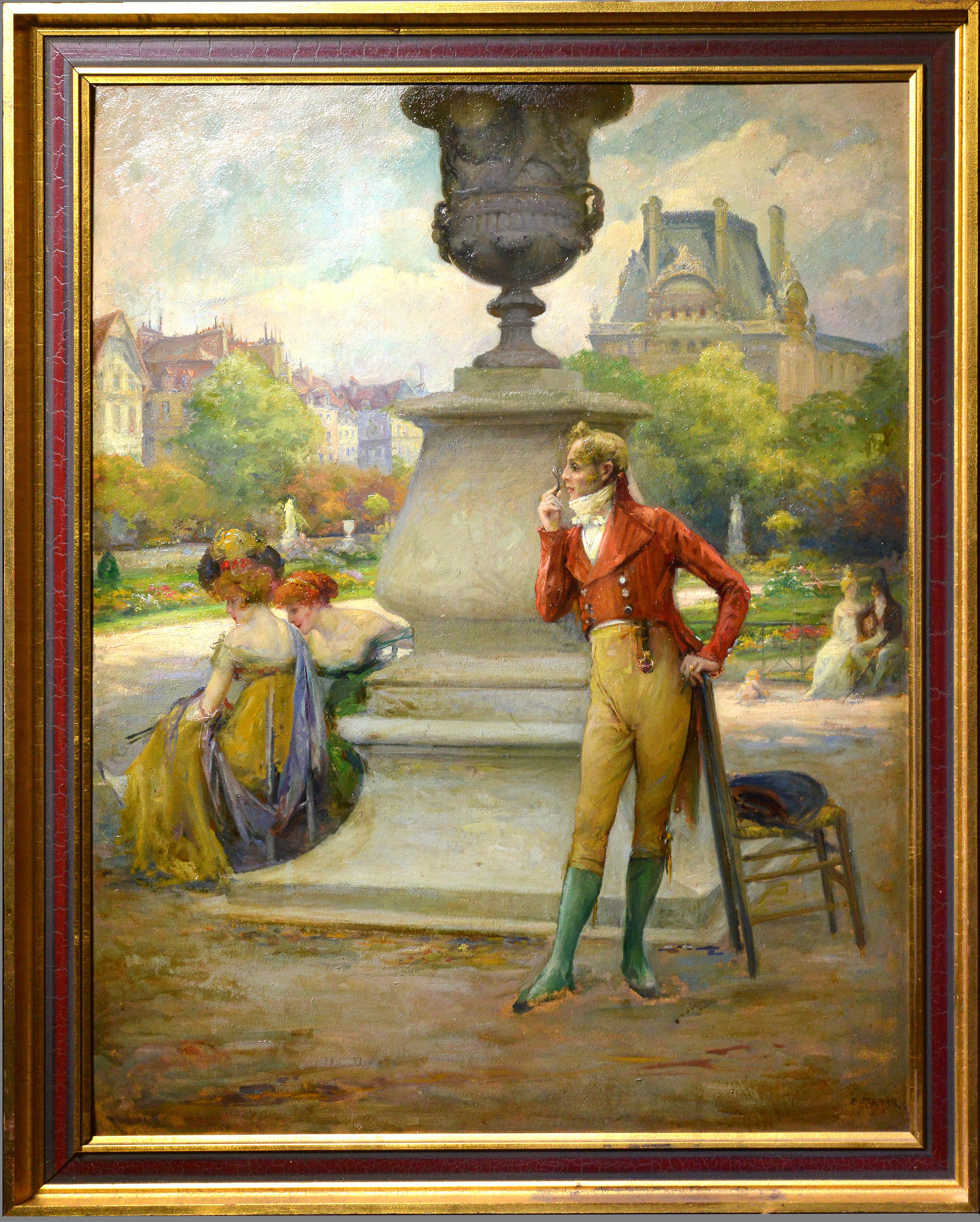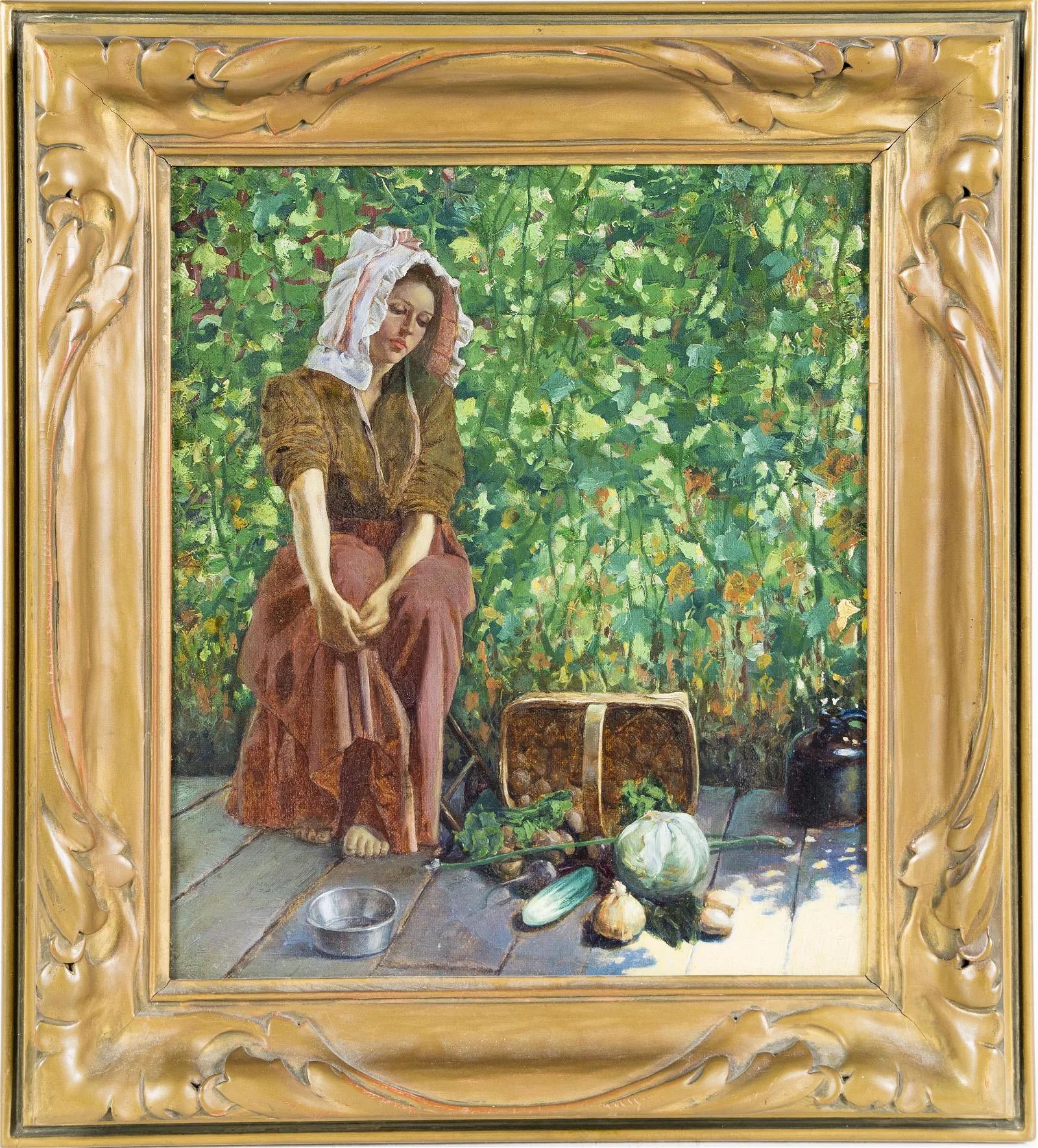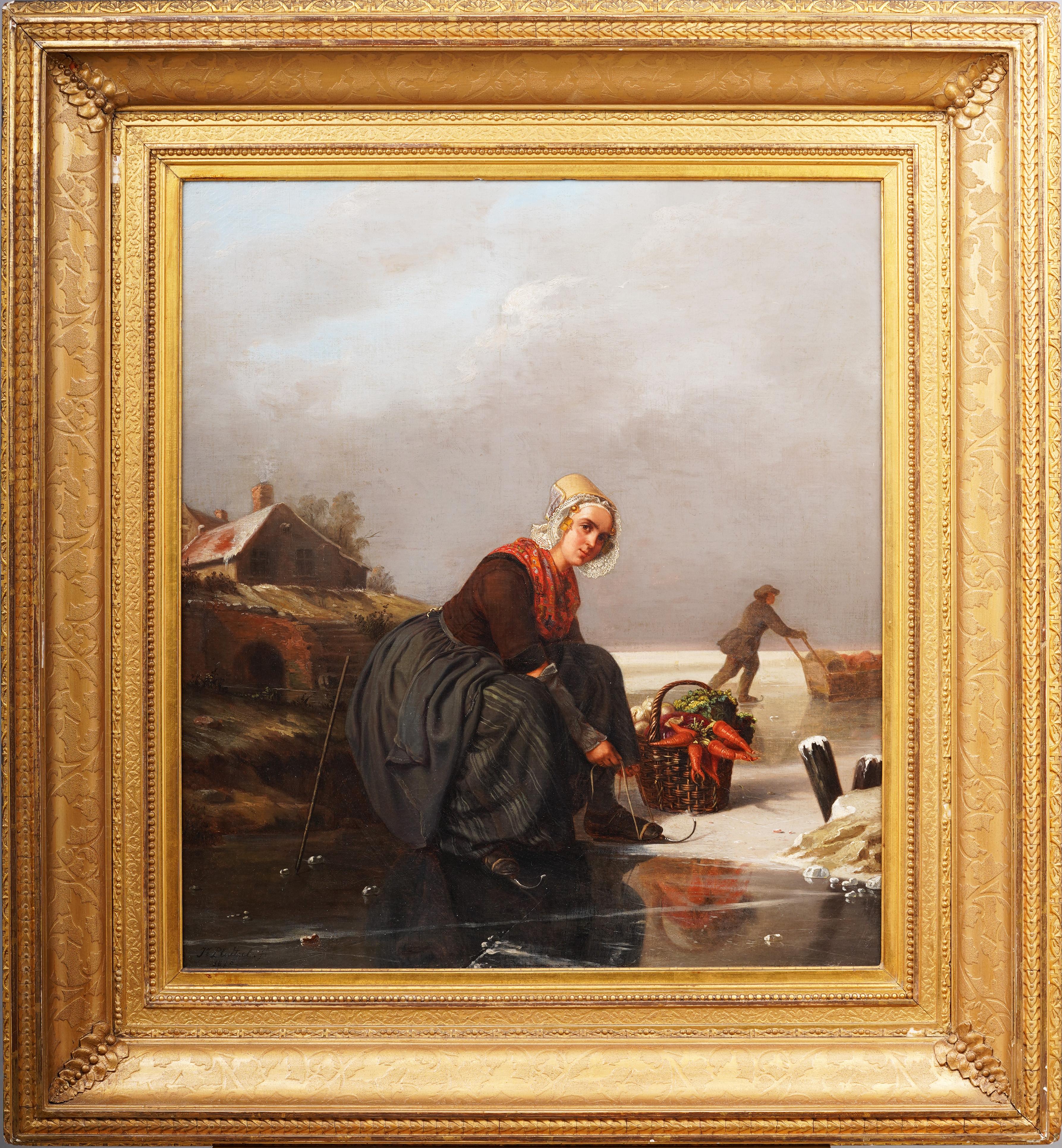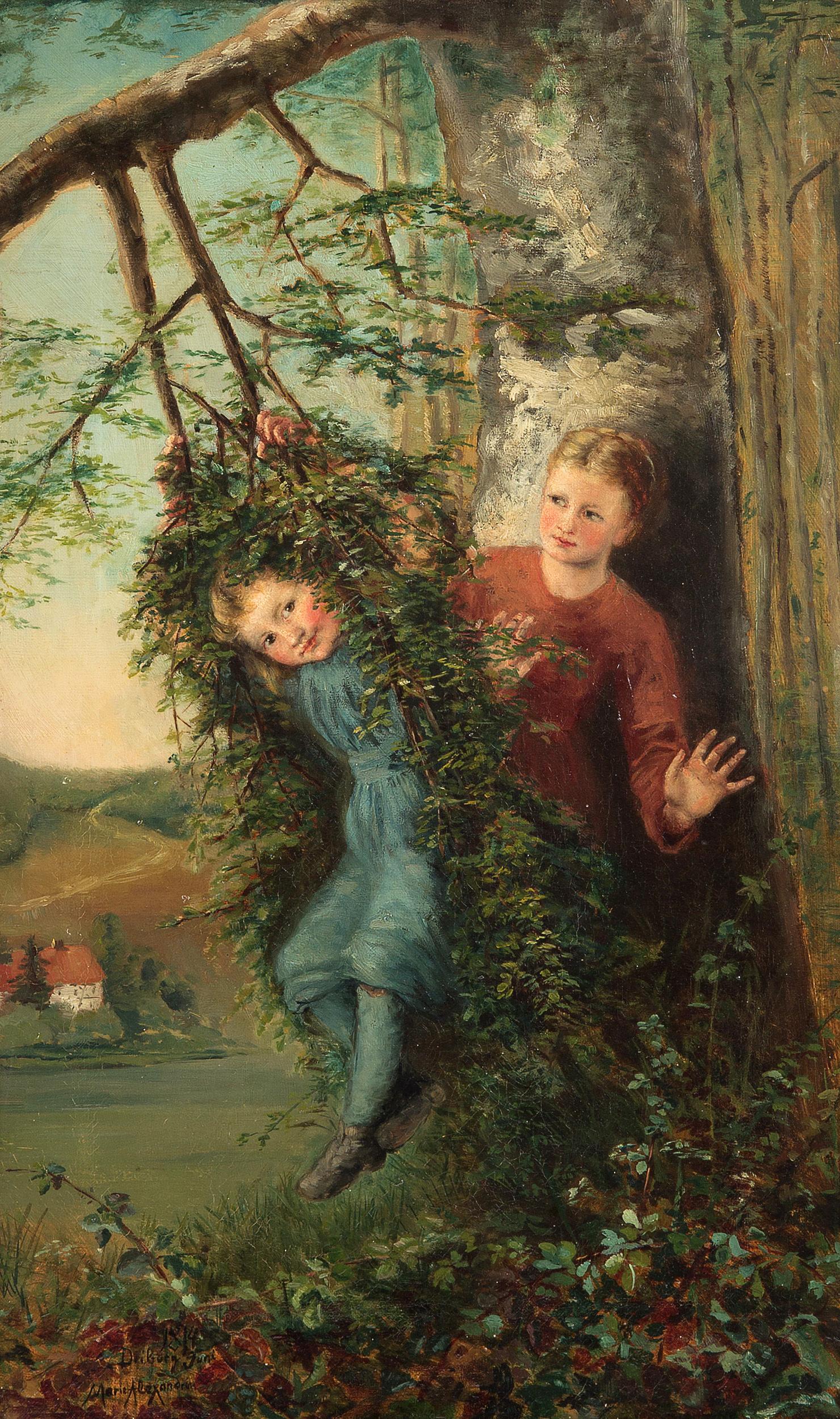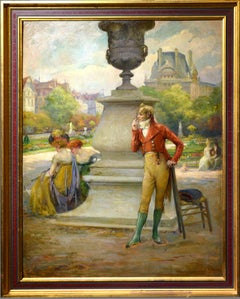Gloire ship portrait, signed oil painting
View Similar Items
Want more images or videos?
Request additional images or videos from the seller
1 of 9
Louis LetoucheGloire ship portrait, signed oil paintingC. 1999
C. 1999
About the Item
- Creator:Louis Letouche (1924 - 2015, French)
- Creation Year:C. 1999
- Dimensions:Height: 14 in (35.56 cm)Width: 19.25 in (48.9 cm)Depth: 1 in (2.54 cm)
- Medium:
- Movement & Style:
- Period:
- Condition:
- Gallery Location:Cirencester, GB
- Reference Number:1stDibs: LU50933003911

About the Seller
5.0
Platinum Seller
These expertly vetted sellers are 1stDibs' most experienced sellers and are rated highest by our customers.
Established in 1989
1stDibs seller since 2016
3,459 sales on 1stDibs
Typical response time: 2 hours
More From This SellerView All
- Sagres II Ship Portrait 20th Century, signed oil paintingBy Louis LetoucheLocated in Cirencester, GloucestershireSagres II, 1937 by Louis Letouche (French 1924-2015) oil painting on linen canvas, stretched over board framed Framed size: 18.25 x 13.75 inches Superb oil painting by the well listed French marine artist Louis Letouche (1924-2015). The painting portrays a Portugese Ship from the early 20th Century, titled: Sagres II. The three-masted ship was launched under the name Albert Leo Schlageter on 30 October 1937 at Blohm & Voss in Hamburg for Nazi Germany's Kriegsmarine. The ship was named after Albert Leo Schlageter, who was executed in 1923 by French forces occupying the Ruhr area. Her first commander was Bernhard Rogge. Sagres is a sister ship of the Gorch Fock, the Horst Wessel, and the Romanian training vessel Mircea. Another sister, Herbert Norkus, was not completed, while Gorch Fock II was built in 1958 by the Germans to replace the ships lost after the war. Following a number of international training voyages, the ship was used as a stationary office ship after the outbreak of World War II and was only put into ocean-going service again in 1944 in the Baltic Sea. On 14 November 1944 she hit a Soviet mine off Sassnitz and had to be towed to port in Swinemünde. Eventually transferred to Flensburg, she was taken over there by the Allies when the war ended and finally confiscated by the United States. In 1948, the U.S. sold her to Brazil for a symbolic price of $5,000 USD.She was towed to Rio de Janeiro where she sailed as a school ship for the Brazilian Navy under the name Guanabara. In 1961, Ambassador Teotónio Pereira of Portugal, who was also a man of the sea...Category
1990s Realist Portrait Paintings
MaterialsOil
- Danube, signed oil paintingBy Louis LetoucheLocated in Cirencester, GloucestershireDanube, 1855-1878 by Louis Letouche (French 1924-2015) oil painting on linen canvas, stretched over board framed Framed size: 14 x 19 inches Superb oil painting by the well listed...Category
1990s Realist Portrait Paintings
MaterialsOil
- Imerethie II, signed oil paintingBy Louis LetoucheLocated in Cirencester, GloucestershireImerethie II, 1924 by Louis Letouche (French 1924-2015) oil painting on linen canvas, stretched over board framed Framed size: 13.5 x 22.5 inches Superb oil painting by the well l...Category
1990s Realist Portrait Paintings
MaterialsOil
- Sagres Ship Portrait signed oil paintingBy Louis LetoucheLocated in Cirencester, GloucestershireSagres, 1937 by Louis Letouche (French 1924-2015) oil painting on linen canvas, stretched over board framed Framed size: 16 x 19 inches Superb oil painting by the well listed French marine artist Louis Letouche (1924-2015). The painting portrays the early 20th Century ship titled: Sagres, 1937. The three-masted ship was launched under the name Albert Leo Schlageter on 30 October 1937 at Blohm & Voss in Hamburg for Nazi Germany's Kriegsmarine. The ship was named after Albert Leo Schlageter, who was executed in 1923 by French forces occupying the Ruhr area. Her first commander was Bernhard Rogge. Sagres is a sister ship of the Gorch Fock, the Horst Wessel, and the Romanian training vessel Mircea. Another sister, Herbert Norkus, was not completed, while Gorch Fock II was built in 1958 by the Germans to replace the ships lost after the war. Following a number of international training voyages, the ship was used as a stationary office ship after the outbreak of World War II and was only put into ocean-going service again in 1944 in the Baltic Sea. On 14 November 1944 she hit a Soviet mine off Sassnitz and had to be towed to port in Swinemünde. Eventually transferred to Flensburg, she was taken over there by the Allies when the war ended and finally confiscated by the United States. In 1948, the U.S. sold her to Brazil for a symbolic price of $5,000 USD. She was towed to Rio de Janeiro where she sailed as a school ship for the Brazilian Navy under the name Guanabara. In 1961, Ambassador Teotónio Pereira of Portugal, who was also a man of the sea...Category
1990s Realist Portrait Paintings
MaterialsOil
- Herzogin Cecilie, signed oil paintingBy Louis LetoucheLocated in Cirencester, GloucestershireHerzogin Cecilie, 1902 by Louis Letouche (French 1924-2015) oil painting on linen canvas, stretched over board framed Framed size: 15 x 21.75 inches Superb oil painting by the well listed French marine artist Louis Letouche (1924-2015). The painting portrays the early 20th Century ship titled: Herzogin Cecilie, 1902. Herzogin Cecilie was built in 1902 by Rickmers Schiffbau AG in Bremerhaven. She was yard number 122 and was launched on 22 April 1902. Completion was on 7 June that year. She was 334 feet 8 inches (102.01 m) long, with a breadth of 46 feet 3 inches (14.10 m) and a draught of 24 feet 2 inches (7.37 m). Herzogin Cecilie was built for Norddeutscher Lloyd Bremen. Unlike other contemporary German merchant sailing ships, the black Flying-P-Liners or the green ships of Rickmers, she was painted in white. She was one of the fastest windjammers ever built: she logged 21 knots at Skagen. The tall ships of the time remained competitive against the steamers only on the longer trade routes: the Chilean nitrate trade, carrying salpeter from Chile to Europe, and the Australian wheat trade, carrying grain from Australia to Europe. Both routes required rounding Cape Horn routinely, and were not well suited for steamers, as coal was in short supply there. Herzogin Cecilie was one of the fastest merchant sailing ships of her time, on a par with the Flying-P-Liners. The trip around Cape Horn from Portland (Oregon) to The Lizard (England) was done in 1903 in only 106 days. At the outbreak of World War I, she was interned by Chile, returning to Germany in 1920, only to be given to France as reparation, and subsequently sold to Gustaf Erikson (24 October 1872 – 15 August 1947) of Finland for £4250. She was homeported at Mariehamn.[2] As the freight rates for salpeter had dropped after the war, Gustaf Erikson sent her to bring grain from Australia. In so-called grain races, several tall ships tried to arrive first in Europe, to sell their cargo for a higher price, as told, for example, in The Great Tea Race of 1866 or The Last Grain Race. Typically, ships were loaded in the Spencer Gulf area, Port Victoria, South Australia or Wallaroo, South Australia, and travelled to Europe, with ports on the British Isles like Queenstown, Ireland or Falmouth, Cornwall being considered as the finish. After "winning" four times prior to 1921, she again won the grain race four times in eleven trips from 1926 to 1936. In 1927, when Herzogin Cecilie covered Port Lincoln (South Australia) –Falmouth, London and won a race against the Swedish ship Beatrice. Alan Villiers was on board, which would result in his book Falmouth for Orders, and later a trip aboard the barque Parma. Wreck of the Herzogin Cecilie in south Devon. With Sven Erikson as her Captain and Elis Karlsson her First Mate, the ship left Port Lincoln in South Australia on 21 January 1935, with a cargo of wheat, and after taking a more southerly route than usual, reached Falmouth for Orders on 18 May making her passage of 86 days the second fastest ever. Herzogin Cecilie was making for Ipswich in dense fog, when, on 25 April 1936, she grounded on Ham Stone Rock and drifted onto the cliffs of Bolt Head on the south Devon coast. After parts of the cargo were unloaded, she was floating again, only to be towed in June 1936 to Starhole (Starehole) Bay at the mouth of the nearby Kingsbridge Estuary near Salcombe, and beached there.On 18 January 1939, the ship capsized and sank. The remains of the ship sit at a depth of 7 metres at 50°12.82′N 3°47.02′W. The timber and brass portholes from the chart room...Category
1990s Realist Portrait Paintings
MaterialsOil
- Gota Lejon, signed oil paintingBy Louis LetoucheLocated in Cirencester, GloucestershireGöta Lejon, 1746. by Louis Letouche (French 1924-2015) oil painting on linen canvas, stretched over board framed Framed size: 15 x 21.75 inches Superb oil painting by the well lis...Category
1990s Realist Portrait Paintings
MaterialsOil
You May Also Like
- French Genre Scene in Parisian park 19th Century Oil paintingBy Emile TabaryLocated in Stockholm, SESigned by Émile Tabary. Lively scene in in a parisian park, pictured moment of city life of the late 19th century. In this painting, some irony and humor are very subtly felt. One of...Category
Late 19th Century Realist Landscape Paintings
MaterialsOil, Cardboard
- Museum Quality American School School Young Woman Portrait Framed Oil PaintingLocated in Buffalo, NYIncredible quality American school portrait painting. Oil on canvas. Framed. No signature found.Category
1880s Realist Portrait Paintings
MaterialsOil, Canvas
- Amazing 19th Century Dutch Skating Woman Winter Landscape Signed Oil PaintingLocated in Buffalo, NYA powerful 19th century landscape and portrait painting. A young dutch woman lacing up her skates. Really rare and well painted. Oil on canvas, lain to board. Housed in a beautif...Category
1870s Realist Portrait Paintings
MaterialsCanvas, Oil
- Portrait of a RockBy Freeman BaldridgeLocated in Storrs, CTFreeman Baldridge's landscape painting, "Portrait of a Rock." The painting featured a rock on the slope of a hillside covered in wildflowers; the eye...Category
1960s Realist Landscape Paintings
MaterialsOil
$1,200 Sale Price40% Off - Harvesting Plums - Scottish 1930's Glasgow School art portrait oil paintingLocated in London, GBThis superb Scottish Glasgow Girl 1930's portrait oil painting is by noted female artist Jessie M. McGeehan. McGeehan studied at the Glasgow School of art, enrolling at the age of 15 in 1888 and her last recorded attendance was in 1895. While at Glasgow School of Art, Jessie associated with prominent Scottish artists including Margaret Macdonald and Frances MacDonald of the Glasgow Four. She also later studied in Paris. This gorgeous vibrant Scottish School style portrait is just superb. The composition is of a young girl in a blue dress, her sleeves rolled up to her elbows. She has little gold hoops in each ear and a bow in her dark hair. She is gazing at the artist/viewer with dark eyes. She is sat in the foreground with a large wicker basket of purple plums and a couple of heads of garlic clasped on her lap. Above her are branches of a tree, laden with fruit. A line of slender silver tree trunks lead past a bed of orange pumpkins to a whitewashed cottage with a woman standing in the doorway. The sunshine is illuminating the scene and casting strong shadows. The brushwork is bold, the colours vibrant and the dark outlines typical of the Scottish School artists. This is a really charming oil painting by a noted female Scottish artist and one of the best examples of her work. Signed and dated (19)32 upper right. Provenance. Yorkshire estate. Condition. Oil on canvas, 21 inches by 18 inches and in good condition. Frame. Housed in a light ornate frame, 28 inches by 25 inches, in good condition. Jessie Mary McGeehan (1872–1950) was a Scottish artist renowned for her painting and mosaic work, often depicting genre scenes, landscapes and figures. McGeehan was born in Airdrie and her father Patrick was a carriage hirer. An artistic family, Patrick exhibited a painting Royal Scottish Academy in 1879 and the artist Aniza McGeehan (1874–1962) was Jessie's younger sister. Both sisters studied at the Glasgow School of Art, Jessie being enrolled at the age of 15 in 1888 and last recorded as attending in 1895. Their younger sister Mary Catherine (1877–1960), later known as Sister Callista, also attended Glasgow School of Art from the age of nine. Jessie McGeehan also studied in Paris after leaving Glasgow School of Art. McGeehan's work included paintings, pastels, stained glass, mosaics and tapestry designs. She was active from 1892 and exhibited at the Royal Scottish Academy from 1895 with the work Sweet Idleness until 1916. From 1897 McGeehan lived and had a studio at 134 Bath Street, Glasgow, which was shared with Aniza until 1899. By 1936 she had moved to 152A Renfrew Street as advertised in the 'Glasgow Observer'. In 1901 McGeehan exhibited the work The Victorian Era at the Royal Academy in London. McGeehan's 1929 oil portrait of her sister Aniza is in the North Lanarkshire Museums collections. This was one of two oil paintings exhibited in the 1929 Walker Art Gallery Autumn Exhibition. Jessie McGeehan created a glass mosaic panel for St Augustine’s Church in Langloan, Coatbridge. She also created a glass mosaic in fourteen panels depicting the Stations of the Cross for St Aloysius...Category
1930s Realist Portrait Paintings
MaterialsOil
- The Young Art Critics - Scottish Edwardian art portrait landscape oil paintingLocated in London, GBThis lovely Edwardian exhibited portrait landscape oil painting is by noted Scottish artist James Riddel. It was exhibited at the Royal Scottish Academy in 1909 and again in Glasgow Institute in 1913, entitled The Critics. Painted circa 1909, the painting has the muted tones but varied palette of the Scottish School. The focus of the composition is a young boy and girl stood in the foreground, outdoors, examining a painting in progress on an easel. They look as if they are giving it very careful consideration. The artist's bag, brushes and tubes of paint lie on the grass beneath the easel but he is not in view. The painting is of the countryside and path leading to a collection of dwellings beyond, all bathed in sunshine. The earnestness of the young art critics can be seen in their body language and is very sweet. A really lovely exhibited Scottish Impressionist Edwardian oil painting and an excellent example of Riddel's work. Signed lower right. Provenance. Exhibited at the Royal Scottish Academy 1909 no. 294, entitled The Critics. Exhibited at the Royal Glasgow Institute of Fine Arts 1913 no. 420 entitled The Critics. Aitken Dott & Son (The Scottish Gallery), Castle Street, Edinburgh. Paisley Art...Category
Early 1900s Realist Portrait Paintings
MaterialsOil
Recently Viewed
View AllMore Ways To Browse
British Naval Portrait
Floating Fireplace
Elizabeth I Portrait
Portrait Woman Oil Painting 19th Frame
18th Century Portrait Lady
Lady Portrait 18th
Portrait Lady British
King Charles I
Queen Of England Portrait
Antique Head Portrait
Le Secret
Portrait Of Lady 18th
18th French Oil Portrait
Portrait Of A Royal Lady
18th Century Oil Painting Paris
The Titan
Our Lady Oil
Lady Dior France
